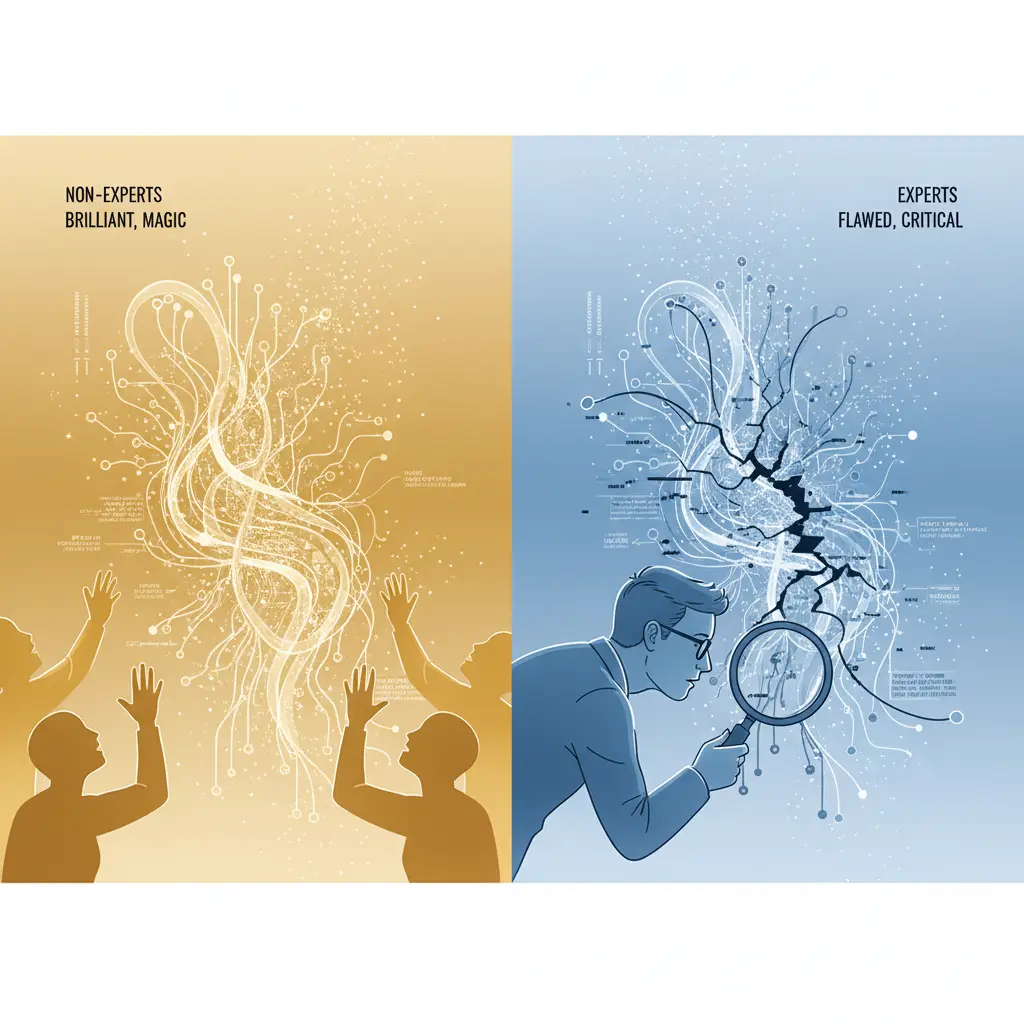Corporate Innovation: turning good intentions into ventures that move the needle

The rhetoric around “innovation labs” and “venture studios” is everywhere, yet most mid-market firms still feel change happening to them rather than through them. In 2024, Boston Consulting Group found that while 83% of leaders say innovation is a top-three priority, barely one-third believe they have the capabilities in place to deliver it (Innovation Systems Are in Need of a Reboot | BCG). When only 11% of organisations have managed to scale even a single AI solution beyond pilot phase (How CIOs can scale gen AI - McKinsey & Company), it’s clear that “doing innovation” and “landing impact” are two very different sports.
Mindlace helps companies in seven key moments. This post unpacks Moment 3 - Corporate Innovation Activation: the point where an ambitious company decides to move from workshops and slide-ware to shipping new ventures, products and business models. See a summary of those moments here.
Why this moment matters now
- Disruption cycles are accelerating. The average tenure on the S&P 500 is expected to fall from 30-35 years in the late 1970s to just 15-20 years this decade (An Industrials Leader's Guide to Strategy Under Uncertainty | Innosight). Standing still is literally a shrinking business model.
- Capital is shifting towards venture building. An EY-Parthenon survey of 1,000 C-suite executives showed that companies doubled the share of operating budget allocated to new-venture building in 2023, to 15% (How Large Companies Can Unleash the Next Corporate Unicorn). Boards are betting on internal start-ups to drive the next S-curve.
- Transformation fatigue is real. Harvard Business Review reports that only 12% of major change programmes produce lasting results (Transformations That Work - Harvard Business Review). Executives are rightly sceptical of another multi-year “transformation” unless early wins are obvious.
- External start-ups are struggling. U.S. start-up failures jumped 60% in the past year (6 Lessons for Startups from a Museum Dedicated to Failure), making corporate resources (customers, data, distribution) more valuable than ever for creating the next growth engine in-house.
Typical signals that your organisation has hit Moment 3
- New blood at the top. A recently-appointed CINO, CPO or CIO arrives with a remit to “do something tangible in 12 months”.
- Slide-deck saturation. There is no shortage of ideation, but the backlog of pilots-that-never-launched is growing moss.
- External pressure. Analysts, investors or regulators are asking for evidence that innovation spend translates into revenue, not theatre.
- Talent churn. High-potential product or data leaders leave because “nothing ships”.
- Budget carve-out. Finance has ring-fenced funds for a venture studio, AI lab or corporate accelerator and wants a credible plan by the next board cycle.
If two or more of these look familiar, you are probably standing at the Activation inflection point.
Why mid-market operators feel the pain first
- Resource limitations. Unlike a FTSE 100 giant, a 1,200-person manufacturer can’t afford a five-year skunk-works that never generates cash-flow. Innovation must be self-funding fast.
- Layer-thin leadership bandwidth. Executives double-hat; every meeting that isn’t tied to the current P&L is a high opportunity cost.
- Legacy tech debt with no fanfare budget. The CIO must modernise older systems and spin up new digital ventures simultaneously—often with the same dozen engineers.
- M&A vulnerability. Without visible growth bets, mid-caps become cheap targets for acquisitive rivals or private equity roll-ups.
- Harder to attract elite talent. A marquee brand can lure entrepreneurs with prestige; a mid-market firm needs proof that ideas will actually launch.
- Regulation bite-size. They are regulated enough to need governance, yet not large enough to maintain specialist compliance teams for every experiment.
- Capital discipline. Every pound of opex competes with working capital, so ventures must demonstrate line-of-sight to ROI fast.
The activation gap: why most labs stall
- Governance gridlock – Ideas cleared by a steering committee of twelve rarely retain their edge.
- Mis-aligned incentives – Bonuses tied to core-business KPIs disincentivise leaders from betting on unproven ventures.
- One-and-done pilots – A hackathon delivers a prototype chatbot but nobody budgets for the iteration, data engineering, security reviews and go-to-market muscle required to scale it.
- Skills mismatch – In-house teams excel at sustaining operations, not building zero-to-one products.
- Zombie partnerships – Corporate VC stakes or accelerator alumni linger without integration back into the mothership.
BCG’s research labels this the “readiness gap”: two-thirds of companies see innovation as strategic, yet only 30% feel ready to execute (Innovation Systems Are in Need of a Reboot | BCG).
A playbook that closes the gap
At Mindlace we developed Pathforger - a rapid, evidence-led framework that shepherds a 'line of enquiry' from spark to scalable venture in twelve to sixteen weeks. Some of our key innovation principles include:
- Small, cross-functional squads (3–8 people). Keeps politics low, velocity high.
- Dual-track sprints. Discovery and delivery run in parallel; user testing on Friday, code shipping Monday.
- Data-driven kill gates. If a hypothesis misses its metric, pivot or terminate quickly, wasting zero goodwill.
- Architect for independence. Each venture adopts a micro-service architecture and shared dev-ops pipeline so it can live outside legacy constraints yet integrate when proven.
- Impact pledge. Every sprint must create a measurable business artefact (e.g., from innovation insights early on to £-value pipeline, costs avoided, user conversions later). If you ever feel we didn't deliver what we said we would, we waive the sprint fee.
Our own venture backed-catalogue – ranging from an AI yacht-broker platform securing £350k seed in three weeks, to a payroll fintech shrinking onboarding from six months to a single day – proves that mid-caps can out-innovate the giants when execution risk is contained.
Where to begin: three activation archetypes
- “Win the factory floor.” Use computer-vision and LLM-driven copilots to halve engineering change-order cycle-time, freeing capital for new product lines.
- “Bank the data.” Spin out an analytics SaaS using under-leveraged operational data (e.g. predictive maintenance across an installed base).
- “Serve new customers.” Create a green-field digital brand to reach adjacent segments without diluting the core brand—think HSBC’s First Direct re-imagined for the AI era.
Each archetype offers an MVP in < 16 weeks, tangible revenue or savings in < 6 months, and a credible scale path that satisfies even the most sceptical CFO.
Metrics that matter
- Time-to-first-revenue – Days from idea sign-off to first customer invoice.
- Internal Rate of Learning (IRL) – Number of validated hypotheses per sprint.
- Activation ratio – % of pilot features that graduate to production (benchmark: > 50% by phase 3).
- Strategic option value – NPV of choices created (e.g. data assets, partner channels) even if the initial product pivots.
Monitor these and you avoid the theatre trap.
The leadership call-to-action
Corporate Innovation Activation isn’t about installing neon beanbags or hosting yet another ideation day. It’s a disciplined, fast-cycle commitment to turn future-back strategy into ventures with P&L signatures small enough to start but big enough to matter.
The firms that master it are already separating from the pack: EY-Parthenon’s data shows that 45% of companies that invested in venture building have launched a unit generating > US $100 m in annual revenue within five years (How Large Companies Can Unleash the Next Corporate Unicorn).
If your organisation is ready to join them—but needs a partner that ships, not talks—Mindlace is here. Let’s activate your next corporate unicorn.
Book a discovery call and we’ll map the first sprint in under an hour.
“Inaction now costs more than action.” —Innosight (An Industrials Leader's Guide to Strategy Under Uncertainty | Innosight)





